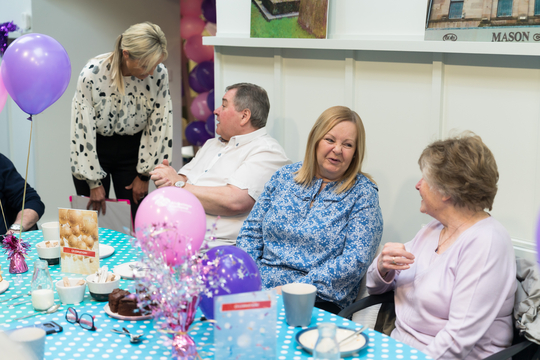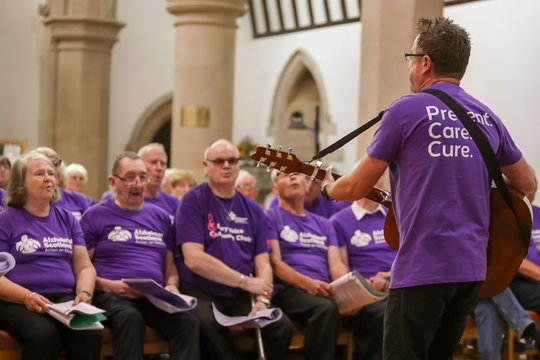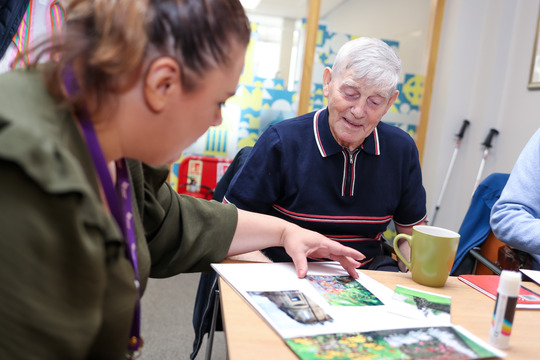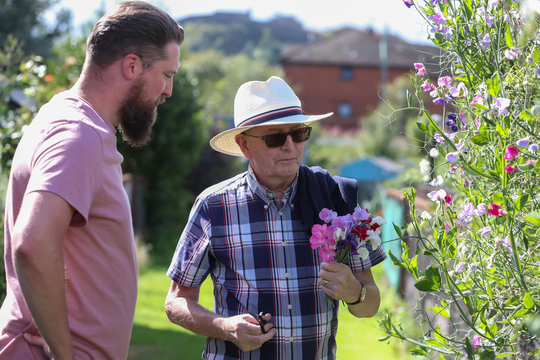Community & support
Alzheimer Scotland offers a wide range of community activities and local support groups across Scotland.
Community and support groups
Our groups can provide opportunities for people with dementia, their families and carers to participate in activities that can help with physical, mental, and emotional wellbeing.
Below are just some examples of our community groups:
- Singing groups: singing groups are an opportunity for people to come along, sing, and enjoy socialising with one another. Our emphasis is on enjoyment and fun, with no need for musical credentials or musicality to join in
- Football Memories groups: these groups are for anyone with dementia who enjoys reminiscing about old football games, players from the past and any other fond memories or interests in football. These groups are run in partnership with Sports Heritage Scotland
- Walking groups: our walking groups can range from walks around your local park or city, through to walks in the forestry areas. Pets are welcome and suitable clothing and footwear are advised
- Cinema & theatre groups: from dementia friendly performances to private screenings, from the classics to the recently released. If you are interested in ‘the big screen’ this theme of community activities is a must to check-out
- Allotment groups: these groups run seasonally and welcome enthusiastic novices to green fingered experts
- Dementia Cafés & lunch groups: a meeting place, at the heart of the local community, that allows people with dementia, their family and friends to meet with others in a similar situation, over a cup of tea or lunch, as well as have access to information and advice from our Dementia Advisors
- Dancing groups: groups can range from ‘boogie in the bar’ to ‘tea dances’. Whatever your music genre or tastes are, there will be something to suit all.
All groups are covered through fundraised income, but we are always grateful for a small donations to help keep the groups running.
Please note, transport is not provided for these activities and those attending the group should be able to attend independently or have one-to-one support with them.
Find community activities near you
Click the button below to find your local Brain Health and Dementia Resource Centre and learn which community activities and support groups are in your area that interest you.



